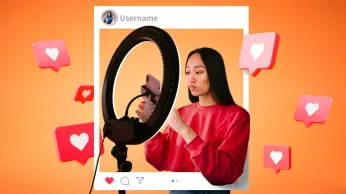How to Build a Winning Loyalty Rewards Program: Strategies and Examples
Learn how to design loyalty rewards programs that go beyond discounts. Explore strategies, psychology-backed tips, and real-world structures to improve customer retention, increase engagement, and build long-lasting emotional connections.
On this page
Ever wondered how a company like LEGO, the world's largest toy manufacturer, came out on top in the era of the internet and the time when virtual recreational activities have taken over?
One answer: Customer loyalty reward program. In the early 2000s, LEGO faced financial difficulty due to video games and the internet which pushed the company to the brink of bankruptcy. However, LEGO staged a remarkable comeback, as it surpassed Mattel to become the world's leading toymaker by embracing its customer base.
For over 75 years, the company designed toys with minimal customer input. This approach needed an overhaul. Over the past decade, LEGO learned the value of collaboration and began building a strong relationship with its fan community.The traditional model of companies controlling customer interactions was fading. Today, interactions happen in a variety of online spaces: Twitch streams, social media groups, and online forums. LEGO recognized that this shift was crucial to LEGO's success.
In 2008, LEGO launched a revolutionary platform called "LEGO Ideas." This platform empowered fans by allowing them to submit concepts for new LEGO sets. Other fans could then vote on these ideas, with the most popular ones receiving a review by LEGO staff. Winning concepts were transformed into official LEGO sets, with the fan designer receiving 1% royalty.
"LEGO Ideas" has seen tremendous growth. The platform boasts over a million users, with a staggering 26,000 submitted ideas. This collaboration has resulted in the creation of 28 unique sets, including a set honoring the "Women of NASA" and a playable LEGO piano. Through "LEGO Ideas," the company transitioned from simply building toys for customers to building them with an engaged and passionate community.
So, how do you reward customers in ways that resonate with them and keep them returning for more?
Let's dive in and explore the different types of customer loyalty programs you can use.
What is a loyalty rewards program?
A customer loyalty program refers to a marketing approach that recognizes the efforts of customers and rewards their continuous preference for their brand over competitors. This strategy encourages customers to keep coming back as these programs typically dole out points, discounts, or other special perks for customers for making repeat purchases.
The more a customer spends or the more frequently they shop, the more rewards they earn. Although this strategy might make many wary, there is a psychological allure that rewards have which makes such programs worth the investment.
With psychologist Norbert Schwarz revealing that even a small gesture, like a 10-cent reward, can create a sense of obligation (reciprocity) between people, a company can implement these programs without significant expense. To corroborate this, an Accenture study has revealed that customers enrolled in loyalty programs tend to spend up to 18% more compared to non-members.
If done right, a customer reward loyalty program can easily:
- Retain customers as these shoppers make purchases based not on just the price points, but the shared values, engagement, and the overall experience they have had of your brand.
- Gain more referrals. If your customers are enjoying your brand, they will talk about you to their friends and family.
- Get authentic content that works as your products' testimonials and instill trust. They will ultimately be the ambassadors for your brand.
Benefits of implementing loyalty rewards program
Loyalty reward programs are more than just a marketing tool; they are a powerful strategy for building long-term relationships with customers. Implementing an effective loyalty program can offer numerous benefits that go beyond merely increasing sales. Here are some key advantages:
1. Increased customer retention
One of the most significant benefits of loyalty reward programs is their ability to boost customer retention. When customers feel valued and rewarded for their loyalty, they are more likely to return to your brand instead of exploring alternatives. This consistent engagement helps to create a strong customer base that is less susceptible to competition.
2. Customer data insights
Loyalty programs provide valuable insights into customer behavior and preferences. By tracking how customers earn and redeem rewards, businesses can gather data that helps in personalizing marketing efforts, optimizing product offerings, and improving customer experiences. This data-driven approach allows businesses to make informed decisions that can enhance overall customer satisfaction.
A well-known bank aimed to improve customer engagement with a personalized rewards program. Loyalife provided a digital rewards platform for this purpose. This platform allowed the bank to offer personalized rewards to its customers.
The initiative led to improved customer satisfaction and higher retention rates. Data showed a significant increase in customer participation in the rewards program. This resulted in higher transaction volumes and increased profitability for the bank. The successful program implementation resulted in:
- A 146% increase in customer engagement through personalized rewards and a diverse redemption catalog.
- A 170% growth in transaction volume.
- A 62% expansion of the user base within just 22 months.
3. Enhanced brand loyalty
A well-designed loyalty reward scheme can significantly enhance brand loyalty. Customers who participate in these programs often develop an emotional connection with the brand, seeing it as more than just a place to shop. This emotional bond is what turns ordinary customers into brand advocates who are likely to promote your brand to others.
Tarte Cosmetics’ Tarte Rewards program is a great example of how brand loyalty can be enhanced. The program offers not just points for purchases but also opportunities for members to engage with the brand through social media and community events. This level of engagement creates a deeper connection with the brand, fostering loyalty that goes beyond the transactional level.
4. Higher average order value
Loyalty programs can also encourage customers to spend more. By offering rewards that require a certain level of spending, businesses can motivate customers to increase their average order value. This is especially true for tiered programs where customers strive to reach higher levels for better rewards.
5. Competitive advantage
In a crowded marketplace, a well-executed loyalty program can give your brand a significant competitive edge. Customers are more likely to choose a brand that offers a rewarding experience over one that doesn’t. Loyalty programs not only attract new customers but also help retain existing ones, which is crucial in maintaining market share.
How to create a customer loyalty program: 9 Practical tips
A well-designed loyalty program can do more than increase repeat purchases — it can turn customers into advocates. But to make that happen, the program needs to be thoughtful, relevant, and genuinely rewarding. Here are nine tips to help you build a customer loyalty program that keeps customers coming back.
1. Understand your audience
Your program should reflect what your customers truly value. That starts with research. Use customer surveys, behavior data, and interviews to learn what motivates your most loyal buyers. What kinds of rewards would encourage them to return? What types of recognition would feel meaningful? The more you understand their preferences, the more relevant your program can be.
2. Create tiers that inspire progress
Tiered loyalty programs tap into the human desire to earn status and unlock benefits. Giving customers something to work toward — whether it's early access, exclusive deals, or free perks — keeps them engaged. Each tier should feel like an achievement, offering increasing value that makes staying loyal feel rewarding.
3. Offer real value
Loyalty programs should never feel one-sided. If the benefits lean too heavily in the brand’s favor, customers will notice. Make sure your rewards feel worthwhile — like bonus points, meaningful discounts, or free gifts tied to customer milestones. A program that clearly gives back builds long-term trust.
4. Make it personal
Personalization sets great programs apart. Use browsing history, purchase data, and preferences to create a more tailored experience. For example, if a customer usually buys skincare products, you could offer a sample or discount on complementary items like cosmetics or wellness kits. Personal touches increase relevance and show that you understand your customers.
5. Incentivize sign-ups
A welcome bonus or special perk can be just the nudge someone needs to join your loyalty program. Whether it’s a discount, a free item, or bonus points, offering an incentive at sign-up creates an immediate sense of value and starts the relationship off on a positive note.
6. Make the experience seamless with technology
Friction is the enemy of loyalty. Leverage technology to streamline how customers earn and redeem rewards. For instance, using SMS or mobile apps can place offers directly into customers' hands. Features like instant point tracking, push notifications, or digital wallets improve usability and keep engagement high.
7. Stay flexible and adaptable
The market changes — and so do customer expectations. Your loyalty program should be able to evolve. Whether it’s adding digital redemption options, adjusting tier structures, or responding to new shopping behaviors, agility is essential for long-term success. Programs that can adapt quickly are better equipped to keep customers engaged over time.
8. Let data guide your decisions
Loyalty success isn’t just about enrollment numbers. Dig into the data. Track metrics like incremental sales, redemption rates, and customer lifetime value to assess what’s really working. Use these insights to refine your offers, identify high-value customer segments, and adjust the structure of your program as needed.
9. Tap into emotion
Beyond points and perks, emotional engagement drives true loyalty. Give customers reasons to feel connected — through thoughtful experiences, exclusive access, or features that make them feel seen. Small touches, like remembering a customer’s preferences or celebrating their milestones, can make a big impact. A loyalty program that fosters joy, trust, and appreciation can turn casual shoppers into brand fans.
Types of loyalty reward programs
Loyalty rewards programs encourage customers to return and make repeat purchases. These programs offer various rewards for customer engagement and generate brand loyalty. Here's a breakdown of some popular loyalty program structures:
1. Points-based programs
Customers earn points for actions like purchases, reviews, or referrals. These points can be redeemed for discounts, free products, or exclusive experiences.
Earning Stars goes beyond just free drinks; members can also redeem them for food and other rewards. In addition to these redemption options, there are many other advantages to joining Starbucks Rewards.
2. Value-based programs
Rewards are personalized based on a customer's past purchases and preferences. This fosters a sense of exclusivity and caters to individual needs.
3. Tiered programs
Customers progress through tiers based on their spending or engagement. Higher tiers unlock increased benefits like exclusive discounts, priority access to new products, or personalized customer service.
Each level offers a range of perks such as free Wi-Fi, exclusive member rates, mobile check-in, and more. The benefits increase as members progress to higher tiers, with Ambassador Elite status being the most exclusive and offering personalized services and additional rewards.
4. Subscription-based programs
Customers pay a subscription fee for ongoing benefits. This can include free shipping, access to exclusive products, or early access to sales.
These programs are important because they:
- Increase customer retention
- Boost customer engagement
- Gather valuable customer data
5. Cashback programs
When considering how to reward customers, cashback programs stand out. They offer a tangible return, making customers feel valued. Cashback rewards give customers cashback or money to spend with the business. This type of loyalty program is popular for financial companies.
For example, Gap rewards shoppers with Gap Cash for in-store or online purchases.
Bank of America's Preferred Rewards is another prime example. Customers earn cashback by choosing spending categories and using their cards at various outlets. John Sellers, a Rewards Executive at the bank, highlights the program's success.
It boosts customer satisfaction as eight in ten participants recommend the bank. Cashback programs are a win-win, fostering loyalty while driving increased spending.
6. Spend-based programs
While points programs reward every purchase, spend-based programs take a different approach. They're designed to recognize and incentivize high-spend customers, ensuring they remain loyal to your brand.
Spend-based programs are especially beneficial for business travelers. Those booking last-minute flights, often at higher prices, feel valued for their frequency and the amount they spend. It's a win-win, ensuring customers feel recognized for every dollar they part with.
7. Refer a friend program
Have you ever thought about how to reward customers for spreading the word about your brand? Refer-a-friend programs are the answer. They transform loyal customers into brand ambassadors.
Airbnb’s referral program increased their bookings by over 25%, and the last version came in stronger than before, boosting referrals by more than 300%.
8. Gaming programs
Gaming programs infuse the routine act of purchasing with excitement and engagement. By gamifying the rewards process, brands can make earning points more enjoyable, encouraging customers to spend more and stay hooked.
Instead of a straightforward points system, these programs often introduce challenges, tiers, or special rewards that customers can "play" to earn, turning the Social shopping experience into a fun game.
But it's not just about stars. The program has expanded, allowing stars to be redeemed for more than just coffee – think extra espresso shots or select merchandise.
Managed through their mobile app, Starbucks also alerts customers to bonus point opportunities, ensuring the game stays fresh and engaging.
9. Mission-driven programs
If your brand stands firmly behind a social mission, a mission-driven customer loyalty program could be your path to deepening customer engagement. Such programs resonate because they align purchases with shared values.
They've crafted ice cream flavors inspired by social justice themes, channeling sales towards charities championing various causes, from environmental conservation to social welfare.
The mission allows customers to feel their purchases, regardless of size, contribute to a greater good. If you're considering this route, ensure your brand's values are clear and identify causes that resonate with your audience.
10. Community programs
While many brands focus on rewarding customers with tangible perks, Sephora takes a different approach.
Sephora provides value and fosters a deeper emotional connection with its customers by offering an interaction platform. Such community-driven rewards strengthen the bond between the brand and the customer, making the rewarding experience more personal and engaging.
11. Paid programs
Have you ever considered how to reward customers willing to invest upfront? Paid programs might be the answer. Customers pay a fee to unlock exclusive perks.
Members enjoy free delivery from numerous restaurants by subscribing to DashPass for a nominal monthly charge.
The key to a successful paid loyalty program? Ensure the benefits surpass the cost, making it a win-win for both the brand and the customer.
12. Free perks programs
When considering how to reward customers, sometimes the simplest gestures make the biggest impact.
Everyone adores complimentary treats, and free perks programs tap into this universal love. By offering loyal customers free products or services, businesses express gratitude and encourage repeat visits and purchases.
This rewarding approach not only delights their users but also boosts visibility for restaurant partners, introducing diners to new culinary experiences on the app.
13. Send gift cards
Gift cards have always been a favorite when pondering how to reward customers. They offer flexibility, allowing customers to choose what they want while feeling the brand's appreciation.
Whether it's a holiday, a special occasion, or a thank-you gesture, gift cards can significantly impact you. They're not just tokens of appreciation, but also incentives that often lead to further purchases, enhancing customer loyalty.
Loyalife: Powering innovative loyalty rewards programs
Loyalty reward programs are essential for building strong customer relationships. They go beyond encouraging repeat purchases by creating lasting connections with customers. A well-designed program tailored to your audience can enhance customer retention, provide valuable insights, and give your brand a competitive edge.
Implementing a successful loyalty program involves careful planning, choosing the right rewards, and regularly updating the scheme to keep it relevant. While challenges like customer engagement and data privacy exist, the benefits far outweigh the effort.
Businesses that align their loyalty programs with customer values and preferences are more likely to create loyal brand advocates, driving long-term success.
With Loyalife, you get an all-in-one suite that covers every touchpoint of your loyalty journey:
- Loyalty engine: Design personalized loyalty programs that fit your unique goals, whether it’s driving repeat purchases, increasing lifetime value, or incentivizing specific behaviors.
- Rule engine: Set flexible, no-code rules to control how customers earn and redeem rewards—fast, intuitive, and scalable.
- Engagement hub: Engage your community with real-time interactions, gamification, referral incentives, and communication tools that make your brand stand out.
- Member management: Gain a 360° view of each member and manage tiers, preferences, and interactions seamlessly.
- Rewards marketplace: Offer a wide variety of global and local rewards your customers will love, from digital gift cards to experiences—backed by Xoxoday Plum’s robust catalog.
- Reports & insights: Make smarter decisions with real-time dashboards and analytics that track engagement, ROI, and program performance.
- Integrations: Connect effortlessly with your CRM, POS, apps, and more through ready APIs and plug-and-play connectors.
Loyalife doesn’t just help you run a loyalty program—it helps you grow one that truly resonates with your audience.
👉 Schedule a free demo with our loyalty specialists and see how Loyalife can transform your customer experience from transactional to unforgettable.









